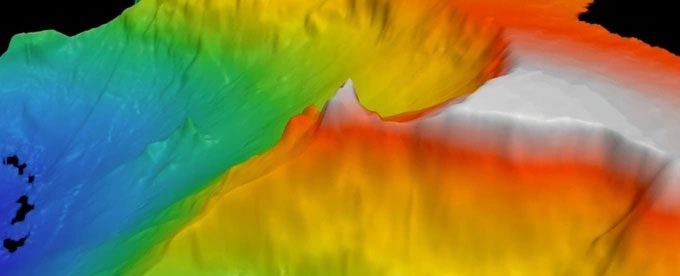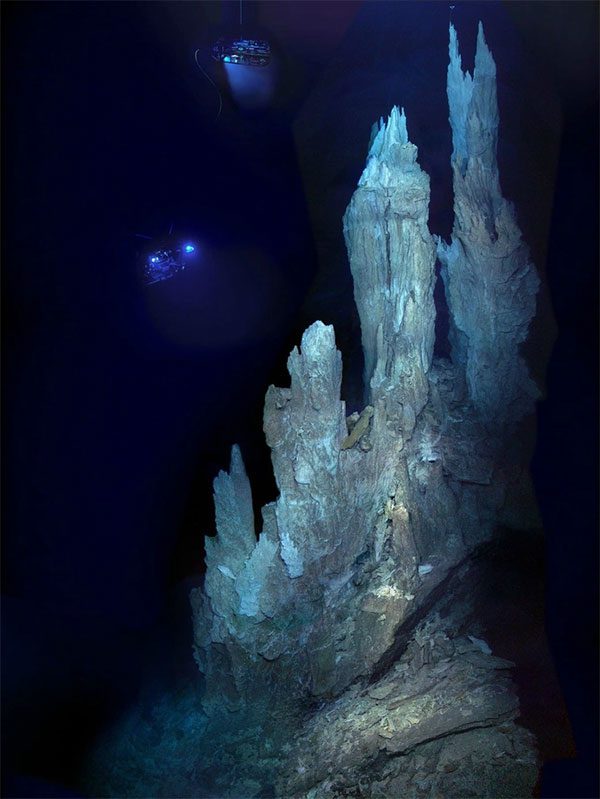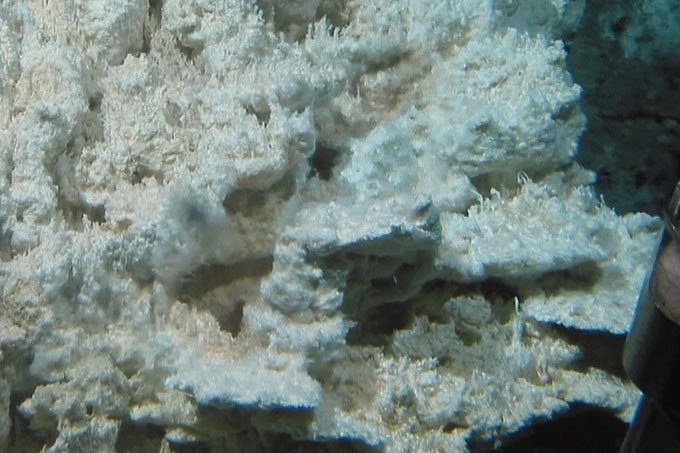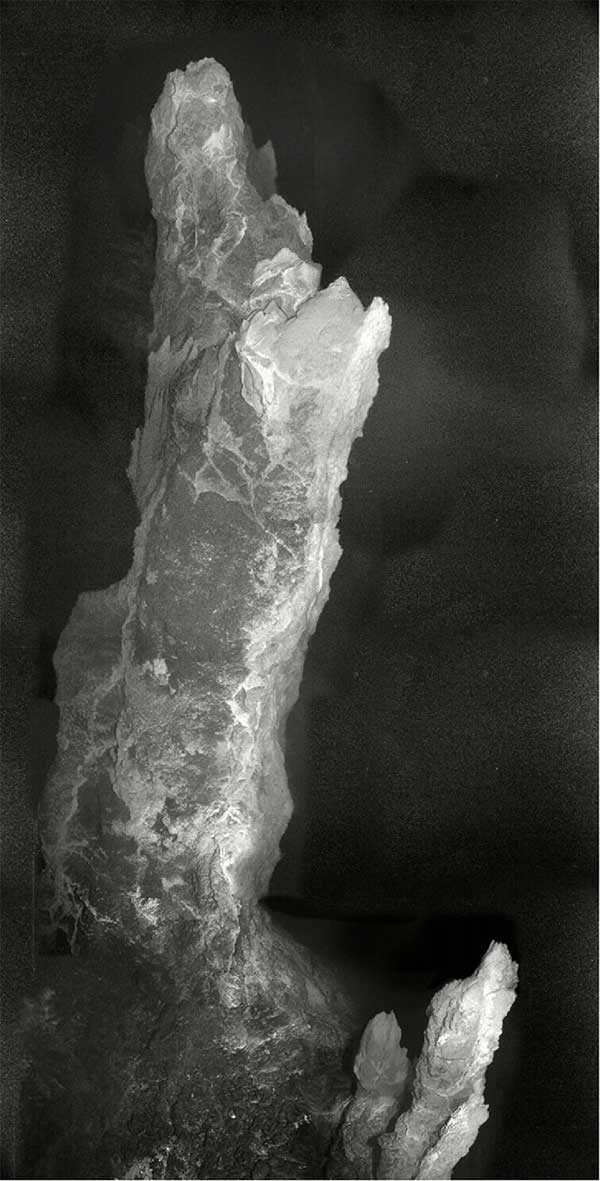Located to the west of a mountain range deep in the Atlantic Ocean, there is a peak near which rises a striking sight of jagged towers amidst a dark expanse.
The walls and columns of carbonate limestone appear in an eerie blue under the light from the spotlight of a remotely operated vehicle approaching to explore this submerged mountain range. They range in size from small stone piles the size of a chair to solid rock formations towering 60 meters high. Here exists an ecosystem that scientists refer to as the “lost city.”

The underwater terrain of the lost city viewed through a hydrothermal lens (Photo: University of Washington).
The hydrothermal lost city was discovered by scientists in 2000. It lies 700 meters beneath the ocean surface and is the oldest known environment with long-standing circulation beneath the ocean. No other place like this has ever been known to humanity.
For at least 120,000 years, and possibly even longer, the cover of this underground world has reacted with seawater to push hydrogen, methane, and other dissolved gases into the ocean.
In the cracks and crevices of the conduits in this area, hydrocarbons have sustained unique microbial communities even in the absence of oxygen.

A remotely operated vehicle illuminating the towers of the lost city. (Photo: D.Kelly/UW/URI-IAO/NOAA).
Vertical vent pipes emitting hot gases up to 40 degrees Celsius are home to numerous snails and crustaceans. Larger species such as crabs, shrimp, sea urchins, and eels, although rare, can also be found here.
Despite such harsh environmental conditions, this place seems to be teeming with life. Some researchers argue that it is worthy of our attention and protection.
While there may be other hydrothermal systems like this existing somewhere in the depths of the oceans, this is the only one that has been explored by humans so far, thanks to remotely operated vehicles.
The hydrocarbons generated from the flows in the lost city do not form from carbon dioxide in the atmosphere or sunlight, but from chemical reactions deep at the ocean floor.
Since hydrocarbons are the fundamental building blocks of life, conditions here are entirely suitable for life to form, not only on our Earth but potentially in other places in the universe as well.

Microbial life on a calcite flow in the lost city. (Photo: University of Washington/CC BY 3.0).
Microbiologist Brazelton from the University of Utah, USA, stated: “This is an example of a type of ecosystem that could thrive on the two moons Enceladus and Europa of our Solar System, and possibly even on ancient Mars.“
Unlike underwater volcanoes, which are also considered primordial habitats, the ecosystem of the lost city does not depend on the heat from magma. These underwater volcanoes primarily produce iron and sulfur-rich minerals, while the vertical vent pipes of the lost city produce hydrogen and methane in amounts 100 times greater.
The calcite flows here are also significantly larger than those from underwater volcanoes, indicating they have been active for much longer. The tallest of the solid rock formations is named Poseidon, after the Greek god of the sea, reaching a height of 60 meters.
Meanwhile, just to the northeast of this tallest mountain is a cliff with short bursts of activity. Researchers from the University of Washington describe the flows here as if they are weeping, creating clusters of carbonate stalactites that reach out like fingers from hands stretching upwards.
Unfortunately, scientists are not the only ones interested in this unusual terrain. In 2018, Poland secured rights to exploit the deep sea surrounding the lost city. Although no precious resources are being extracted directly at this hydrothermal site, the destruction of the surrounding environment could lead to unforeseen consequences.
Scientists warn that any waste produced by mining activities could easily destroy the unique habitat of this region. Some experts are calling for the lost city to be added to the list of world heritage sites to be protected before it is too late.

A 9-meter tall vertical vent in the lost city. (Photo: University of Washington).
For tens of thousands of years, the lost city has existed as a testament to the enduring power of life, which we may now very well be on the brink of destroying.





















































